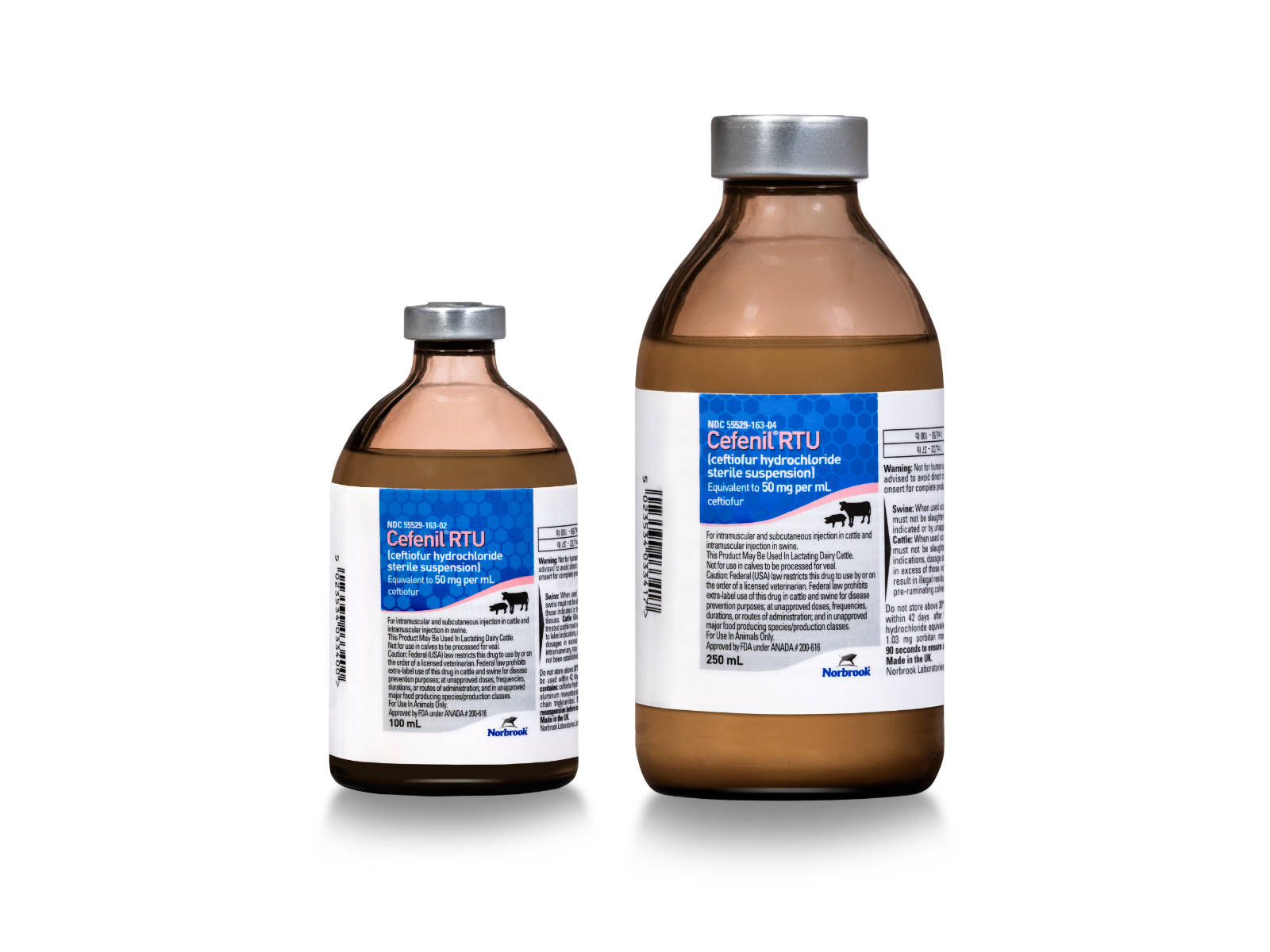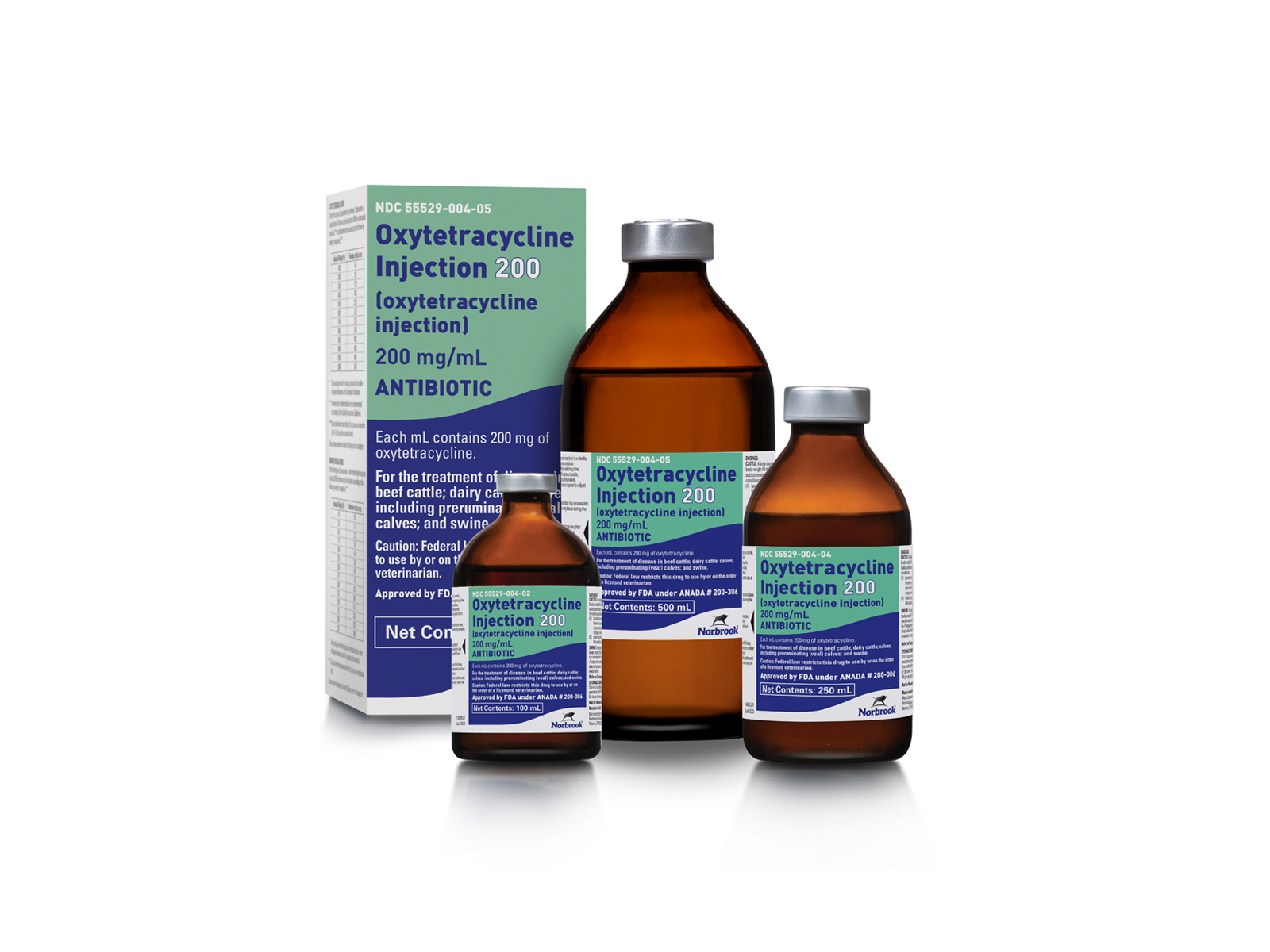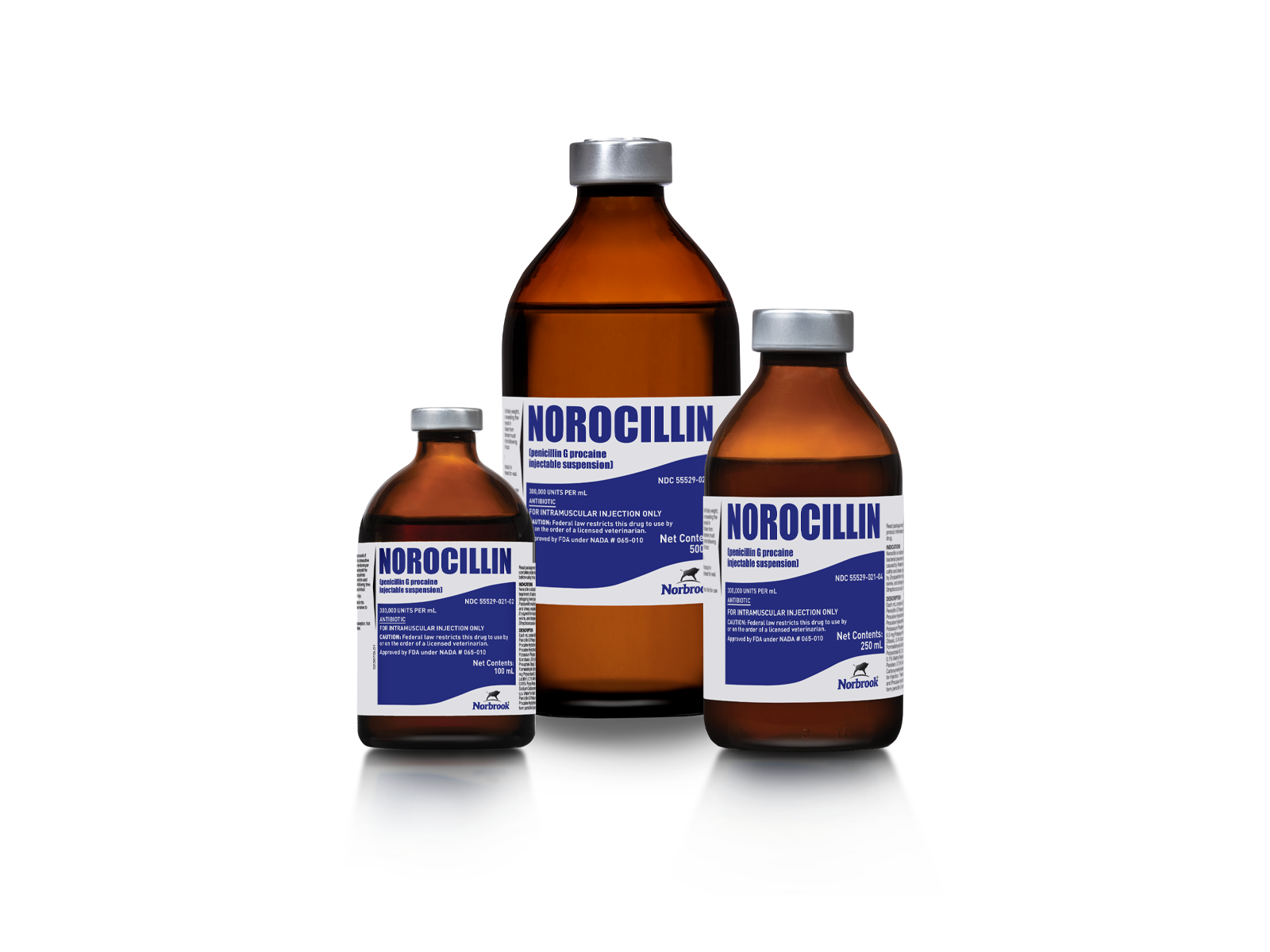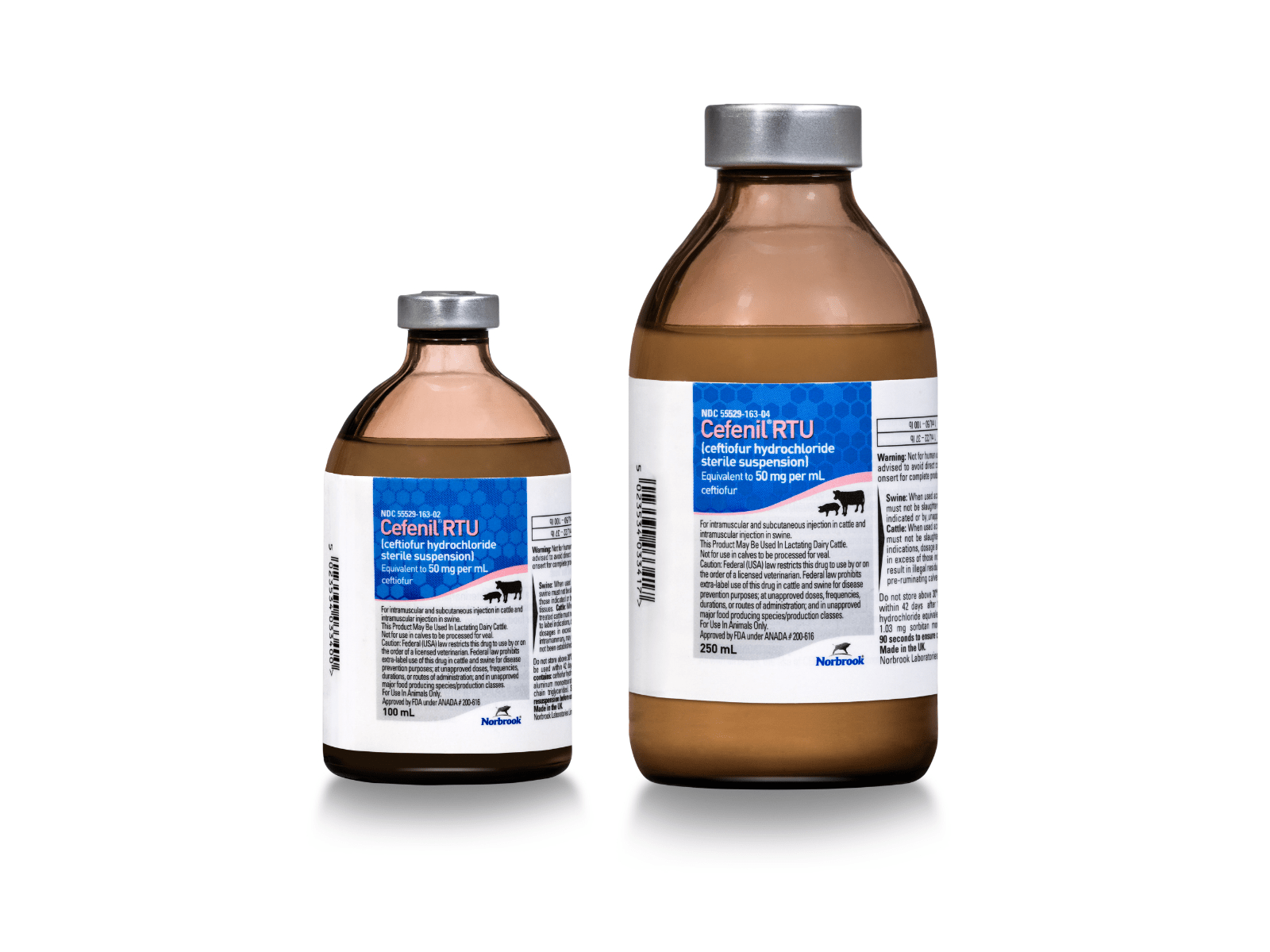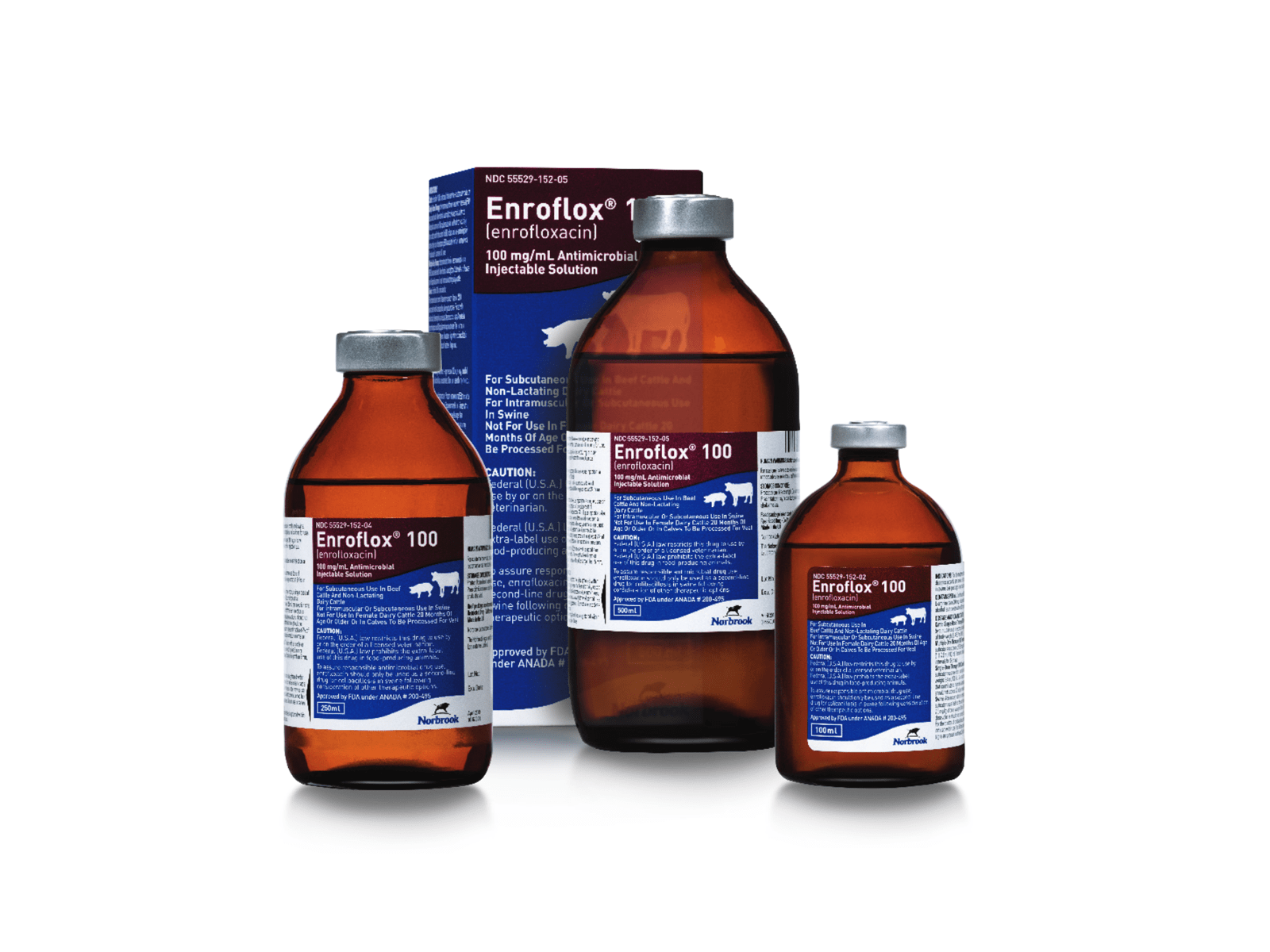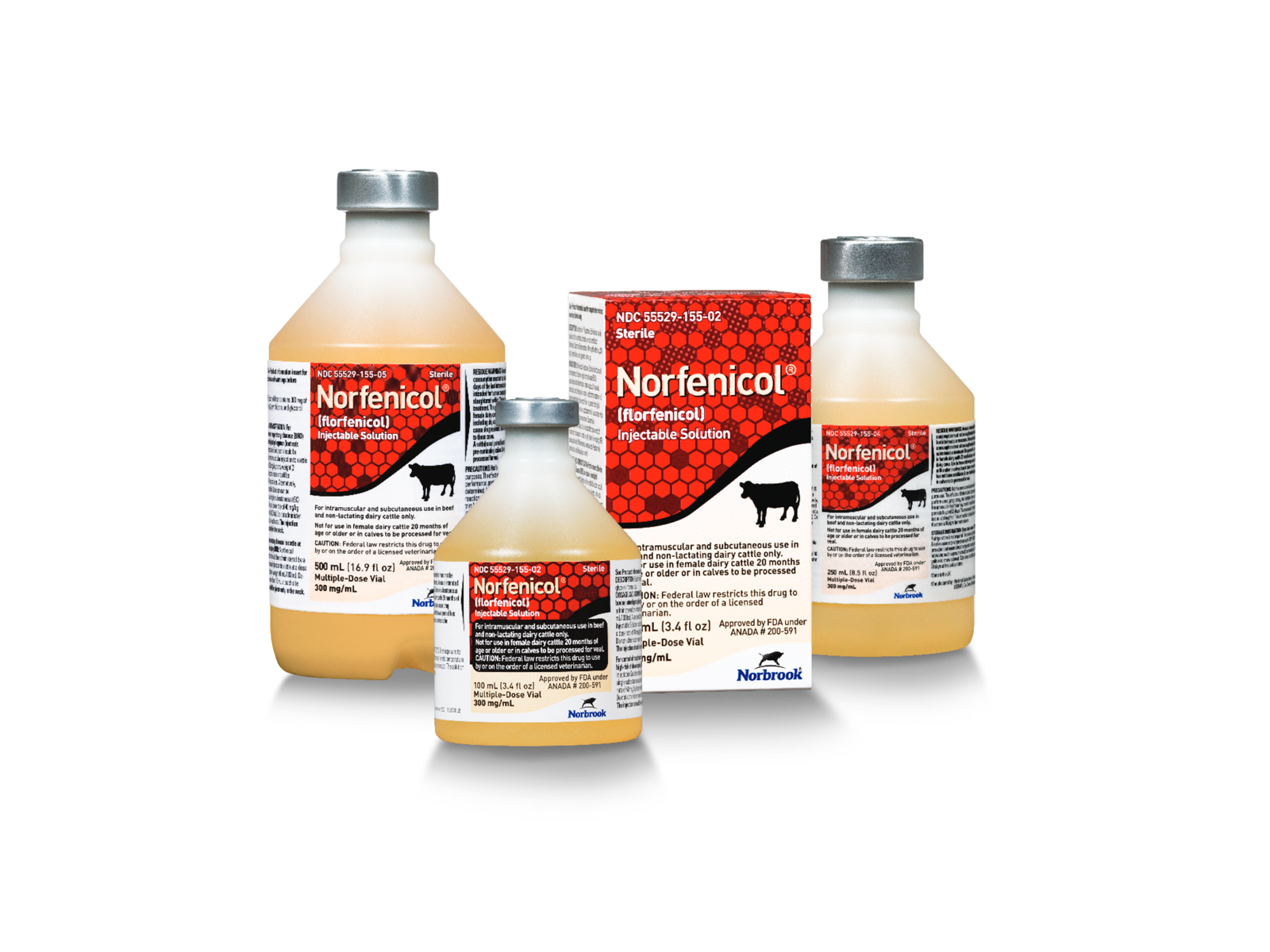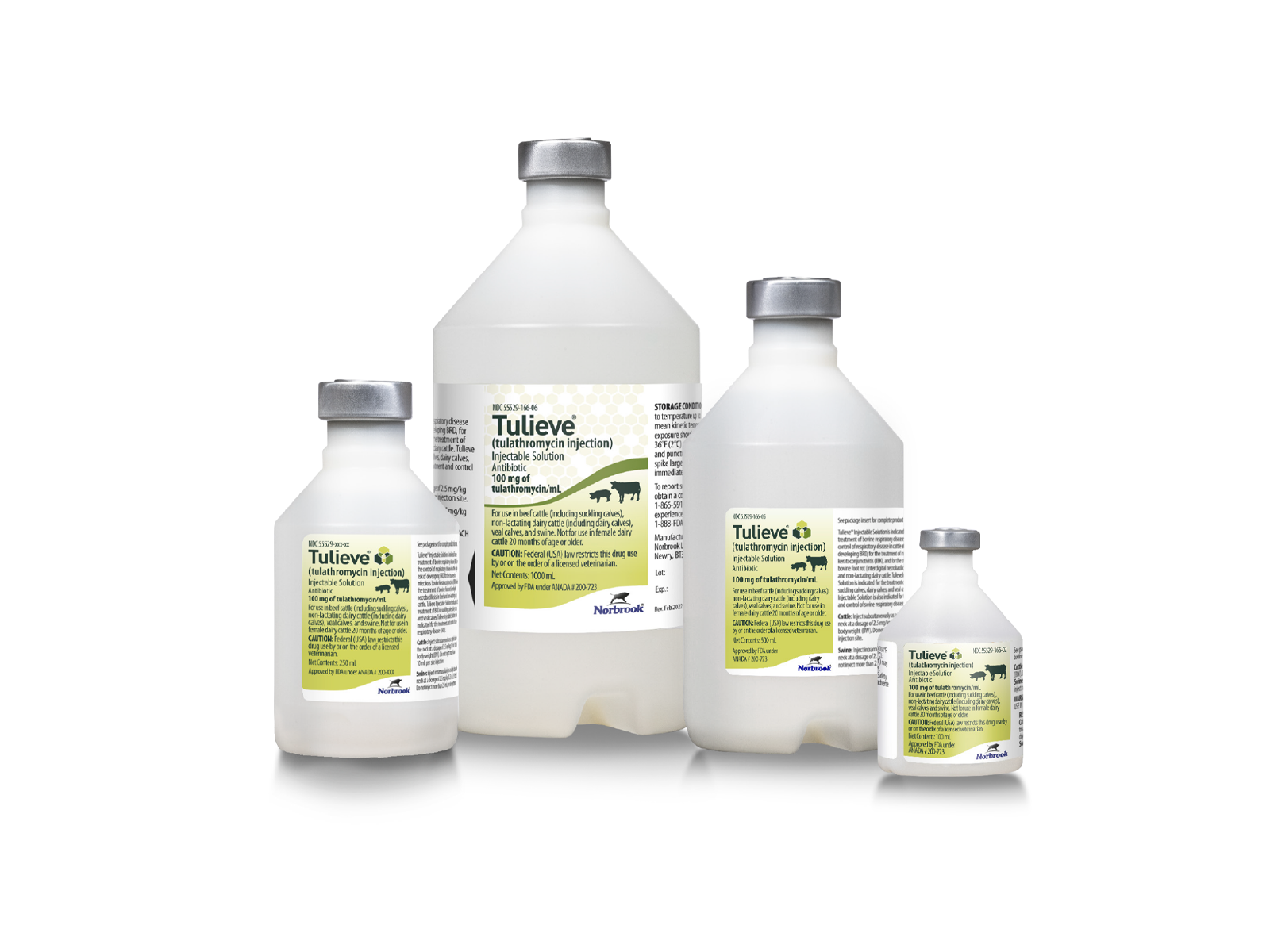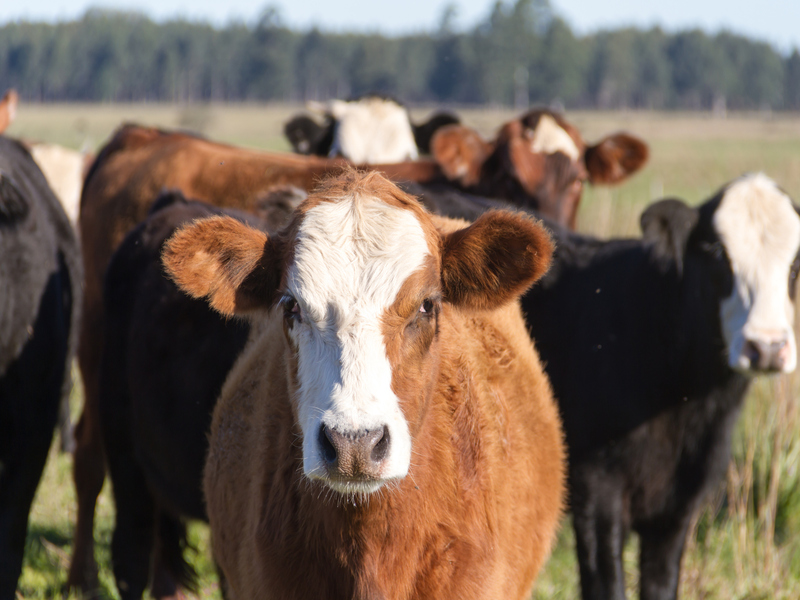
Bovine Respiratory Disease
Bovine Respiratory Disease (BRD)
Bovine Respiratory Disease, or “BRD,” is the most common and costly respiratory condition of cattle in the US. BRD broadly refers to an infection of the upper and lower respiratory tract in cattle by viruses and/or bacteria. If not identified and treated early, it can present a significant challenge to animal health and welfare, ultimately resulting in reduced performance and economic returns to producers. BRD does not discriminate by breed, age, stage of production, or herd size, although naïve calves tend to be most affected. As is the case with most diseases, BRD is multifactorial in nature and derives influence from the environment, management practices, pathogens, and host animal.
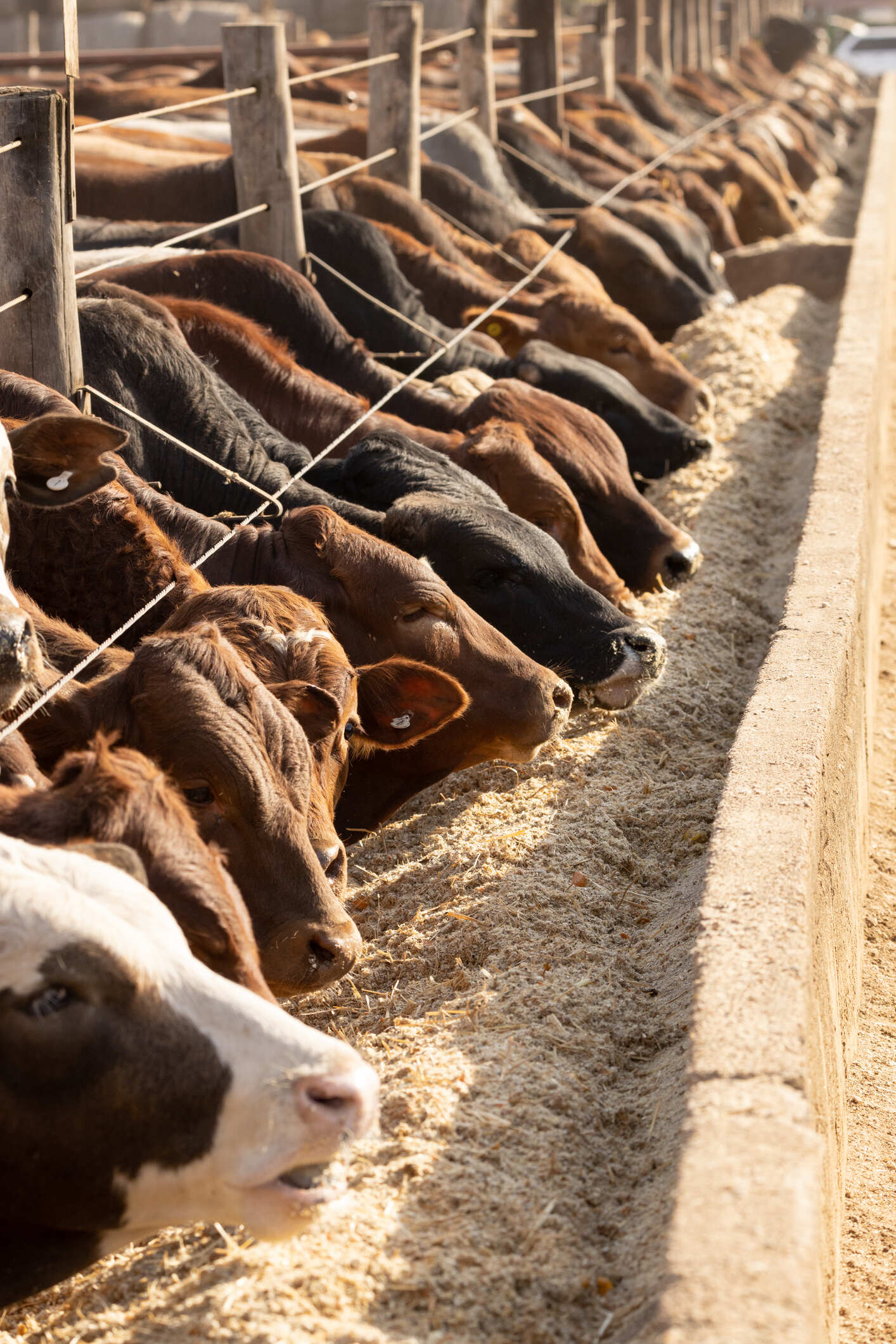

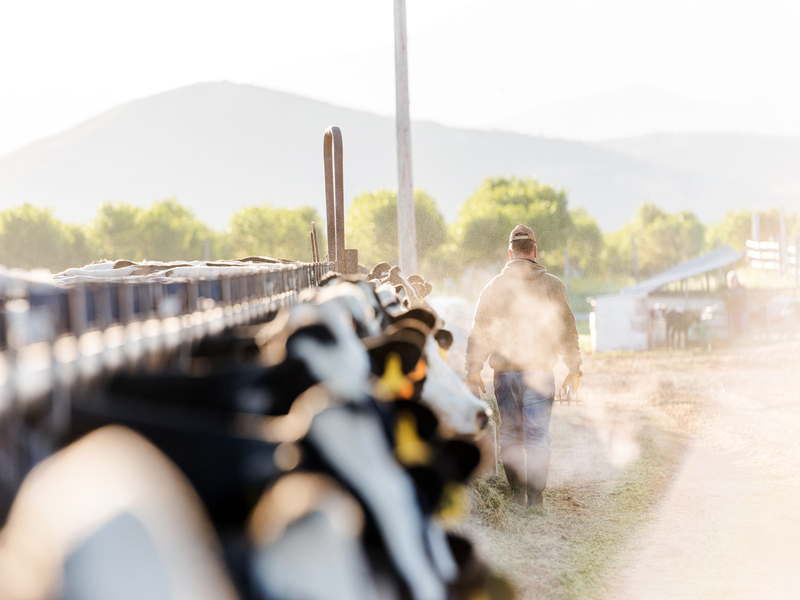
Economic Impact
-
The impact to the US national herd is estimated to be in excess of $1 billion annually.1,2
-
The total cost of BRD (including labor, cost of antibiotic, reduced production and carcass quality and increased days on feed) has been estimated at $38/head, $167/head, and $230/head for beef cattle treated once, twice, or three or more times.3
Understanding Bovine Respiratory Disease
Learn more about the causes and signs of BRD and how to treat and control the disease.
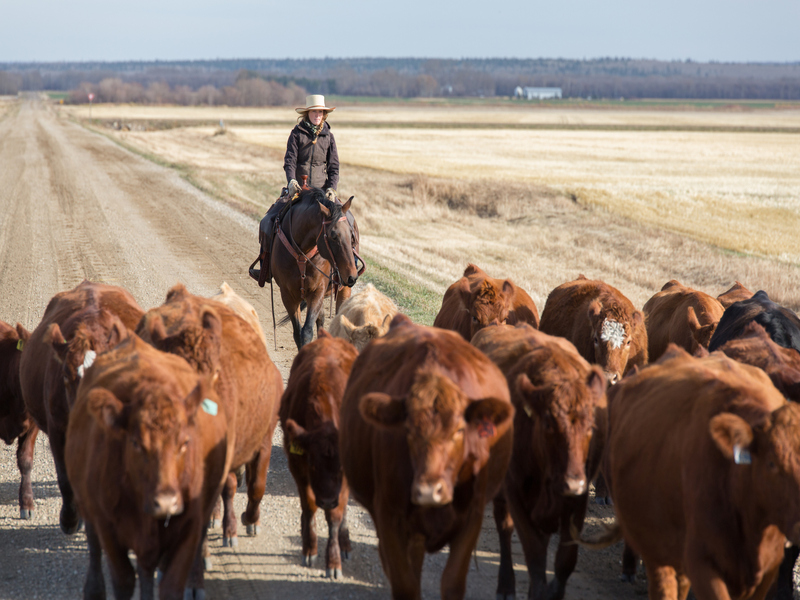
References:
1 Griffin, et al. "Bacterial pathogens of the bovine respiratory disease complex." Vet Clin Food Anim 26 (2010) 381-394.
2 Broderson. "Bovine Respiratory Syncytial Virus." Vet Clin Food Anim 26 (2010) 323-333.
3 Wilson, et al. "Effect of bovine respiratory disease during the receiving period on steer finishing performance, efficiency, carcass characteristics, and lung scores." The Professional Animal Scientist (2017) 33:24-362017.
Safety Information
Cefenil® RTU (ceftiofur hydrochloride sterile suspension)
Observe label directions and withdrawal times. Not for use in calves to be processed for veal. As with all drugs, the use of Cefenil® RTU (ceftiofur hydrochloride sterile suspension) is contraindicated in animals previously found to be hypersensitive to the drug. Download product labeling here for full product information.
Enroflox® 100 (enrofloxacin) Injectable Solution
CAUTION: Federal (U.S.A.) law restricts this drug to use by or on the order of a licensed veterinarian. Federal (U.S.A.) law prohibits the extra-label use of this drug in food-producing animals. To assure responsible antimicrobial drug use, enrofloxacin should only be used as a second-line drug for colibacilosis in swine following consideration of other therapeutic options.
Cattle intended for human consumption must not be slaughtered within 28 days from the last treatment. This product is not approved for female dairy cattle 20 months of age or older, including dry dairy cows. Use in these cattle may cause drug residues in milk and/or calves born to these cows. A withdrawal period has not been established in pre-ruminating calves. Do not use in calves to be processed for veal. To assure responsible antimicrobial drug use, enrofloxacin should only be used as a second-line drug for colibacillosis in swine following consideration of other therapeutic options. Swine intended for human consumption must not be slaughtered within 5 days of receiving a single-injection dose. Use with caution in animals with known or suspected CNS disorders. Observe label directions and withdrawal times. See product labeling here for full product information.
Flunixin Injection (flunixin meglumine injection)
CAUTION: Federal law restricts this drug to use by or on the order of a licensed veterinarian.
Observe label directions and withdrawal times. Not for use in bulls intended for breeding, dry cows or in calves to be processed for veal. Cyclooxygenase inhibitory NSAIDs may be associated with gastrointestinal, renal and hepatic toxicity. Concomitant use with other anti-inflammatory drugs should be avoided or closely monitored. Rare instances of anaphylactic-like reactions, some of which have been fatal, have been reported. See product labeling here for full product information.
Norfenicol® (florfenicol) Injectable Solution
CAUTION: Federal law restricts this drug to use by or on the order of a licensed veterinarian.
Observe label directions and withdrawal times. For use in beef and non-lactating dairy cattle only. Not approved for use in female dairy cattle 20 months of age or older, including dry dairy cows. Animals intended for human consumption must not be slaughtered within 28 days of the last intramuscular treatment or within 33 days of subcutaneous treatment. Do not use in calves to be processed for veal. Intramuscular injection may result in local tissue reaction which may result in trim loss at slaughter. Download product labeling here for full product information, including adverse reactions.
Norocillin® (penicillin G procaine injectable suspension)
CAUTION: Federal law restricts this drug to use by or on the order of a licensed veterinarian.
Observe label directions and withdrawal times. Do not use in calves to be processed for veal. Allergic or anaphylactic reactions, sometimes fatal, have been known to occur in animals hypersensitive to penicillin and procaine. Therefore, animals administered should be kept under close observation for at least one-half hour following injection. See product labeling here for full product information.
Noromycin® 300 LA (oxytetracycline injection)
CAUTION: Federal law restricts this drug to use by or on the order of a licensed veterinarian.
Observe label directions and withdrawal times. Not for use in lactating dairy animals. Adverse reactions, including injection site swelling, restlessness, ataxia, trembling, respiratory abnormalities (labored breathing), collapse and possibly death have been reported. Download product labeling here for full product information.
Tulieve® (tulathromycin injection) Injectable Solution
CAUTION: Federal (USA) law restricts this drug use by or on the order of a licensed veterinarian.
IMPORTANT SAFETY INFORMATION FOR CATTLE: Do not use in female dairy cattle 20 months of age or older, including dry dairy cows. Effects on reproductive performance, pregnancy, and lactation have not been determined. Tulieve® has a pre-slaughter withdrawal time of 18 days. Tulieve® should not be used in animals known to be hypersensitive to the product.
IMPORTANT SAFETY INFORMATION FOR SWINE: Tulieve® has a pre-slaughter withdrawal time of 5 days. Tulieve® should not be used in animals known to be hypersensitive to the product. See product labeling here for full product information.
The Norbrook logo, Cefenil, Enroflox, Norfenicol, Norocillin, Noromycin and Tulieve are registered trademarks of Norbrook Laboratories Limited.
008-25-147



